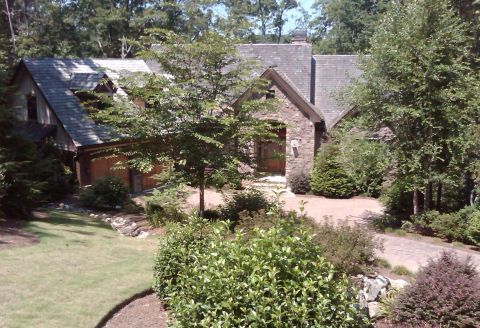You can imagine that I receive my fair share of marketing brochures from golf communities I visit and review. Far fewer have shown up in my mailbox since the economy went south and most baby boomers put their retirement plans on hold. Without the property sales they were used to before customers slowed to a trickle, golf communities can’t, or won’t, spend money on printed communications. Instead, they rely on their own web sites and social networking services like Facebook and Twitter to communicate with the people in their databases.
The strategy might be pennywise and pound foolish. I find myself groaning when my email inbox fills with messages from golf communities, and I grow to resent those who send me repeated messages. For example, Brunswick Plantation, located north of Myrtle Beach, was sending me one message at least every day for a few months, all with virtually the same underlying message of low-priced real estate. Other golf communities are more temperate, but if you are on multiple golf community lists, the sheer volume of emails is annoying. Facebook and Twitter communications just compound the problem.
communities, and I grow to resent those who send me repeated messages. For example, Brunswick Plantation, located north of Myrtle Beach, was sending me one message at least every day for a few months, all with virtually the same underlying message of low-priced real estate. Other golf communities are more temperate, but if you are on multiple golf community lists, the sheer volume of emails is annoying. Facebook and Twitter communications just compound the problem.
I use a computer for hours each day and, honestly, I look forward to holding a sheet of glossy paper or newsprint in my hand for a little bit. My fellow baby boomers are probably more modest than I in their use of the Internet, but no less enthused by print communications. Golf community advertising is targeted to 50- and 60-somethings, and we baby boomers may be perfectly adept at online communication but we were also raised on print. Old habits die hard. And photos still look better on glossy paper than they do on a glossy screen.
I received one of those rare printed marketing pieces today. The latest issue of River Landing’s newsletter, called “Lately,” gets it right. River Landing is located in Wallace, NC, more than an hour from Raleigh and about 45 minutes from Wilmington. That qualifies it as “remote,” although the golf community and its highly rated 36 holes by Clyde Johnston are less than two minutes from Interstate 40. Yes, River Landing’s newsletter includes the obligatory resident testimonials (“Life is good here, very good.”) and plenty of photos of smiling people who could be wearing signs that read, “We are on permanent vacation.”
But, shrewdly, the newsletter also features a local Wallace merchant. Butcher Billy Goff has been in business in Wallace for 21 years and has expanded to serve some of the most popular barbecue in a barbecue mad region. On a subliminal level, the story sends a message to us northerners who don’t live in a big city and consider a butcher a luxury (my town in Connecticut just got its first in 25 years). It also implies that Wallace may be remote, but it must have a strong economic base if businesses can last a couple of decades there. Moreover, the feature on a local merchant does not appear as self-serving as having your residents talk about what a great choice they made; after all, what are they going to say, “We are bitterly disappointed with our life here?”
Customers I work with want assurances that the services they counted on for the last 40 years or so will be available to them in retirement. They are skittish about going from suburbia or a city to the middle of nowhere. River Landing is acknowledging that some prospects think it is far from civilization. The story of Billy the Butcher addresses that notion head-on, and I think successfully.
It is smart marketing for a golf community to communicate what’s outside the gates as hard as it does what’s inside.
If you would like more information about River Landing or any other golf communities in the southern U.S., please contact me.




























